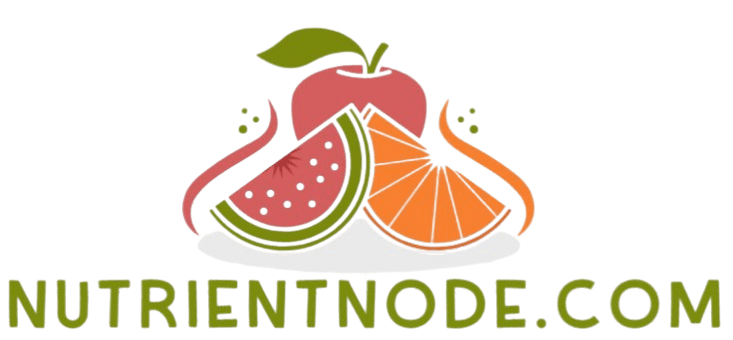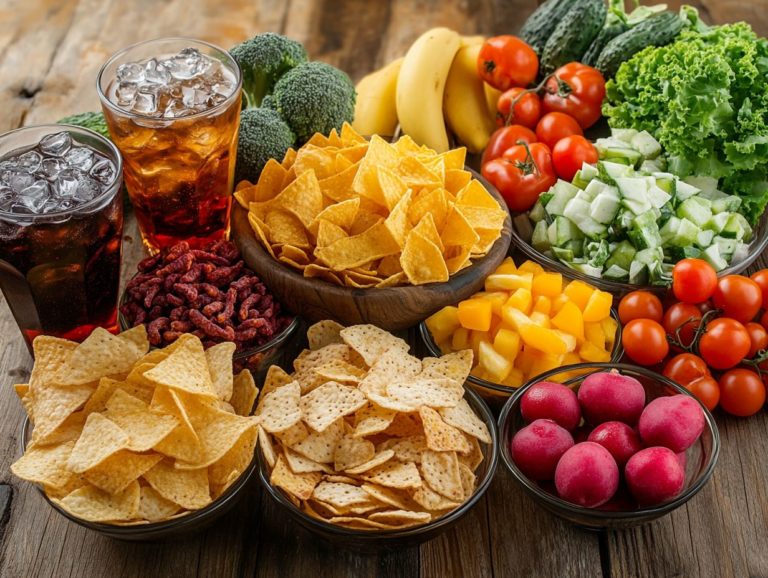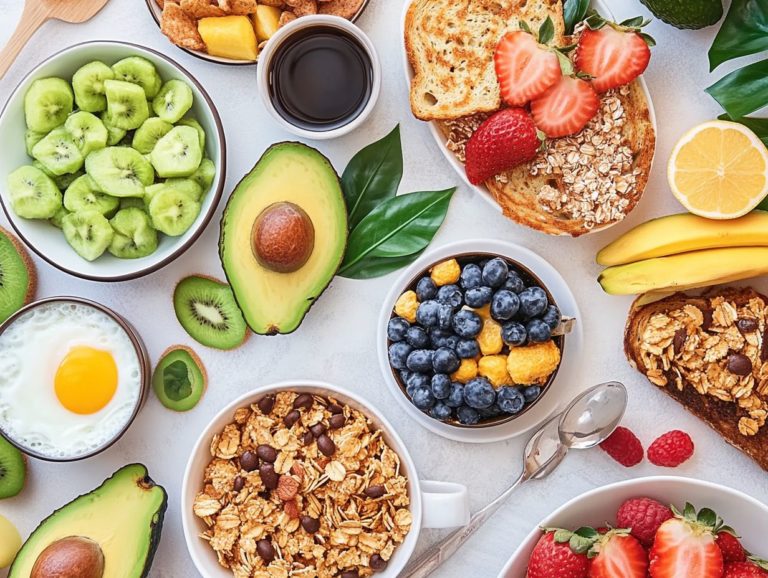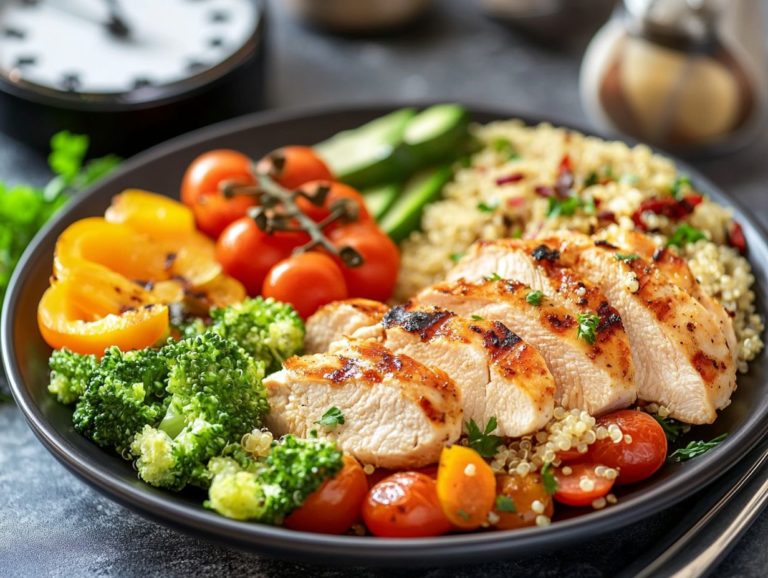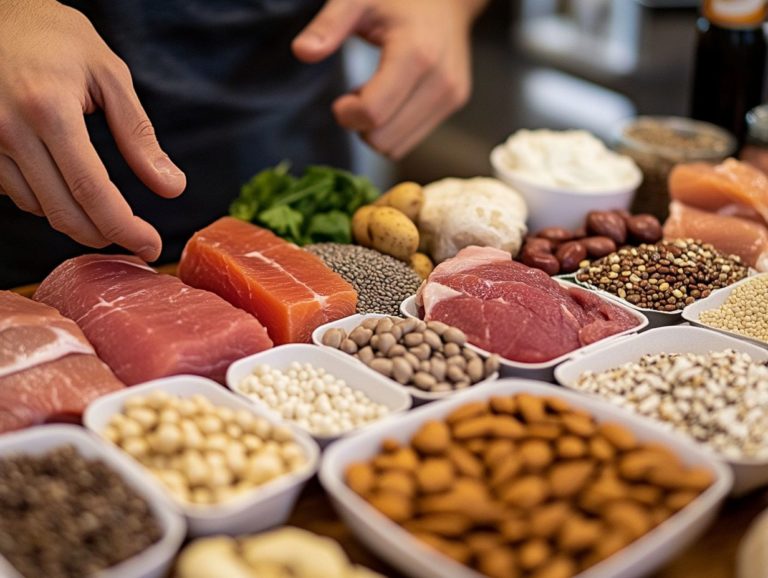5 Misconceptions About Plant-Based Proteins
Plant-based proteins have surged in popularity as you seek to embrace healthier dietary habits.
Yet, misconceptions about their nutritional value and effectiveness continue to linger. Whether it s worries about their completeness, nutrient profiles, muscle-building potential, or even taste, it’s all too easy to get swept up in the myths surrounding them.
This article clarifies five common misconceptions about plant-based proteins, shedding light on their benefits, types, and how you can seamlessly incorporate them into your diet.
Uncover the truth about these essential nutrients and learn how they can elevate your health!
Contents
- Key Takeaways:
- 1. Plant-Based Proteins Are Incomplete Proteins
- 2. Plant-Based Diets Lack Essential Nutrients
- 3. Plant-Based Proteins Are Not as Effective for Building Muscle
- 4. Plant-Based Proteins Are Bland and Boring
- 5. Plant-Based Proteins Are More Expensive
- What Are Plant-Based Proteins and Why Are They Important?
- What Are the Different Types of Plant-Based Proteins?
- How Can One Ensure They Are Getting Enough Protein on a Plant-Based Diet?
- What Are the Health Benefits of Plant-Based Proteins?
- Are There Any Risks Associated with Consuming Plant-Based Proteins?
- How Can Plant-Based Proteins Be Incorporated into Meals?
- Frequently Asked Questions
Key Takeaways:
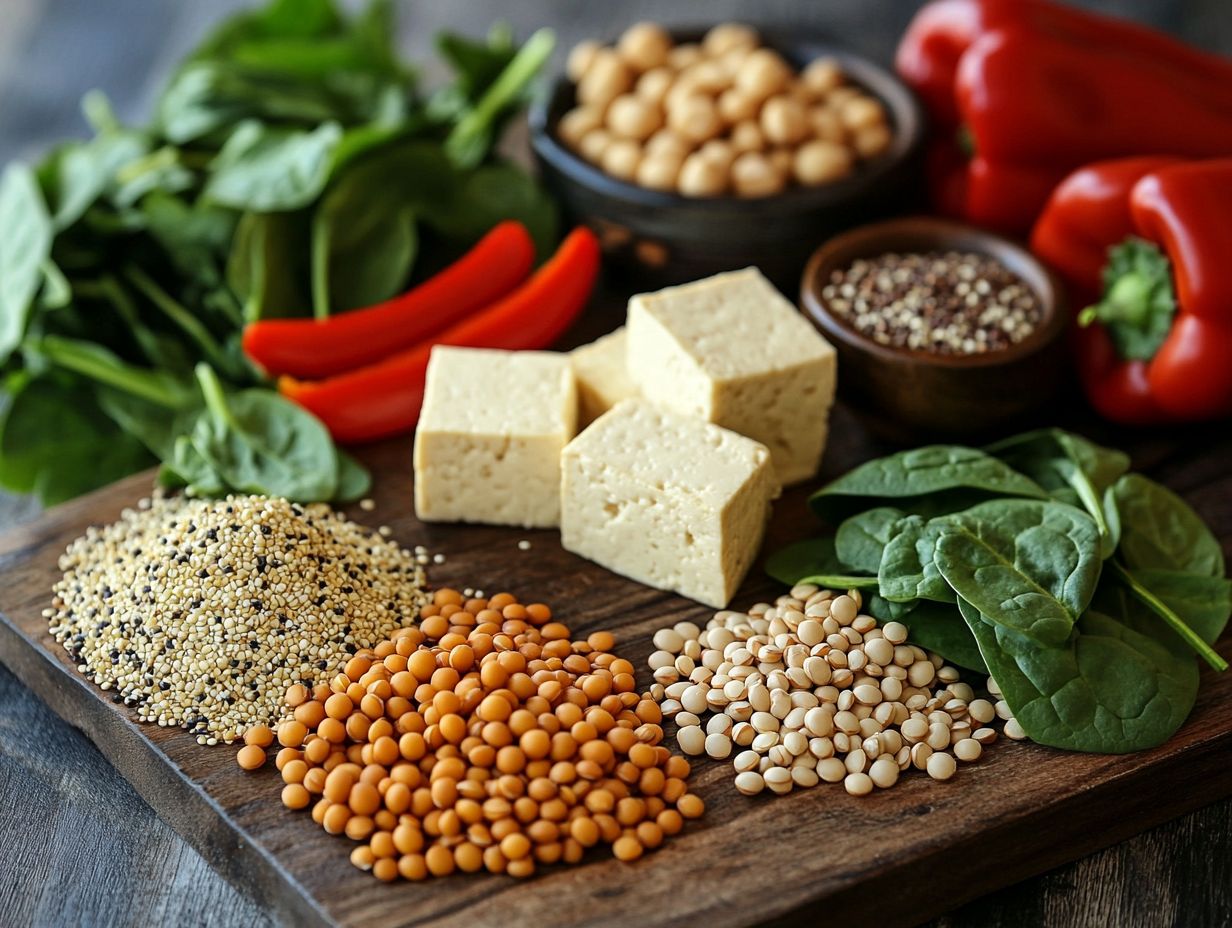
- You can create complete proteins by combining different plant sources!
- A well-planned plant-based diet provides all essential nutrients, including protein.
- Plant-based proteins are just as effective for building muscle as animal-based proteins.
1. Plant-Based Proteins Are Incomplete Proteins
Despite the rising popularity of plant-based diets, a common myth lingers: that plant-based proteins are inherently incomplete and lack the essential amino acids vital for optimal nutrition and health.
Many people worry that these proteins fall short in meeting their protein requirements, particularly for muscle building and overall well-being.
However, research reveals that many plant sources can indeed provide all the necessary amino acids when combined thoughtfully. For example, when you pair legumes like lentils and chickpeas with whole grains such as brown rice or quinoa, you create a complete protein profile.
Nuts and seeds are also an important part of this equation, contributing vital amino acids that help you achieve a balanced intake. Experts recommend shifting the focus from individual meals to overall dietary patterns, which can help dispel the myth surrounding plant proteins.
By grasping these concepts, you can confidently embrace a varied plant-based diet that supports your health and meets your nutritional needs without worry.
2. Plant-Based Diets Lack Essential Nutrients
One of the most frequently discussed concerns surrounding plant-based diets is the belief that they lack essential nutrients vital for maintaining health, particularly iron and calcium, which are typically associated with animal products.
This perspective fails to recognize the diverse array of plant-based sources rich in these nutrients. For example, leafy greens like kale and fortified plant milks can deliver sufficient calcium, while legumes, lentils, and quinoa serve as excellent sources of iron.
It’s essential for you to understand that these nutrients are important not just for bone health and oxygen transport; they also play a crucial role in your overall vitality.
Research indicates that with careful meal planning such as incorporating foods high in vitamin C to enhance iron absorption you can effectively meet your dietary needs.
Nutrition experts often recommend supplementation in certain cases to address potential gaps, ensuring a holistic approach to embracing a plant-based lifestyle.
3. Plant-Based Proteins Are Not as Effective for Building Muscle
Many consumers mistakenly believe that plant-based proteins are less effective for building muscle than their animal-based counterparts. This misconception raises valid concerns about the suitability of plant-based diets for those dedicated to fitness and muscle growth.
In truth, plant-based proteins can provide a solid foundation for muscle development, as long as you consume them in sufficient quantities and strategically time your intake around your workouts.
Nutritionists emphasize that muscle growth hinges not just on protein quality but also on consistent consumption and thoughtful meal planning. Athletes who embrace plant-based diets often share impressive results, utilizing a diverse array of sources like legumes, whole grains, and seeds to fulfill their protein requirements.
Pay particular attention to when you consume protein especially after workouts because this is when your body is actively repairing and building muscle. Fueling it adequately during this critical recovery window is essential for maximizing your gains.
Ready to transform your meals? Let s dive into plant-based proteins!
4. Plant-Based Proteins Are Bland and Boring
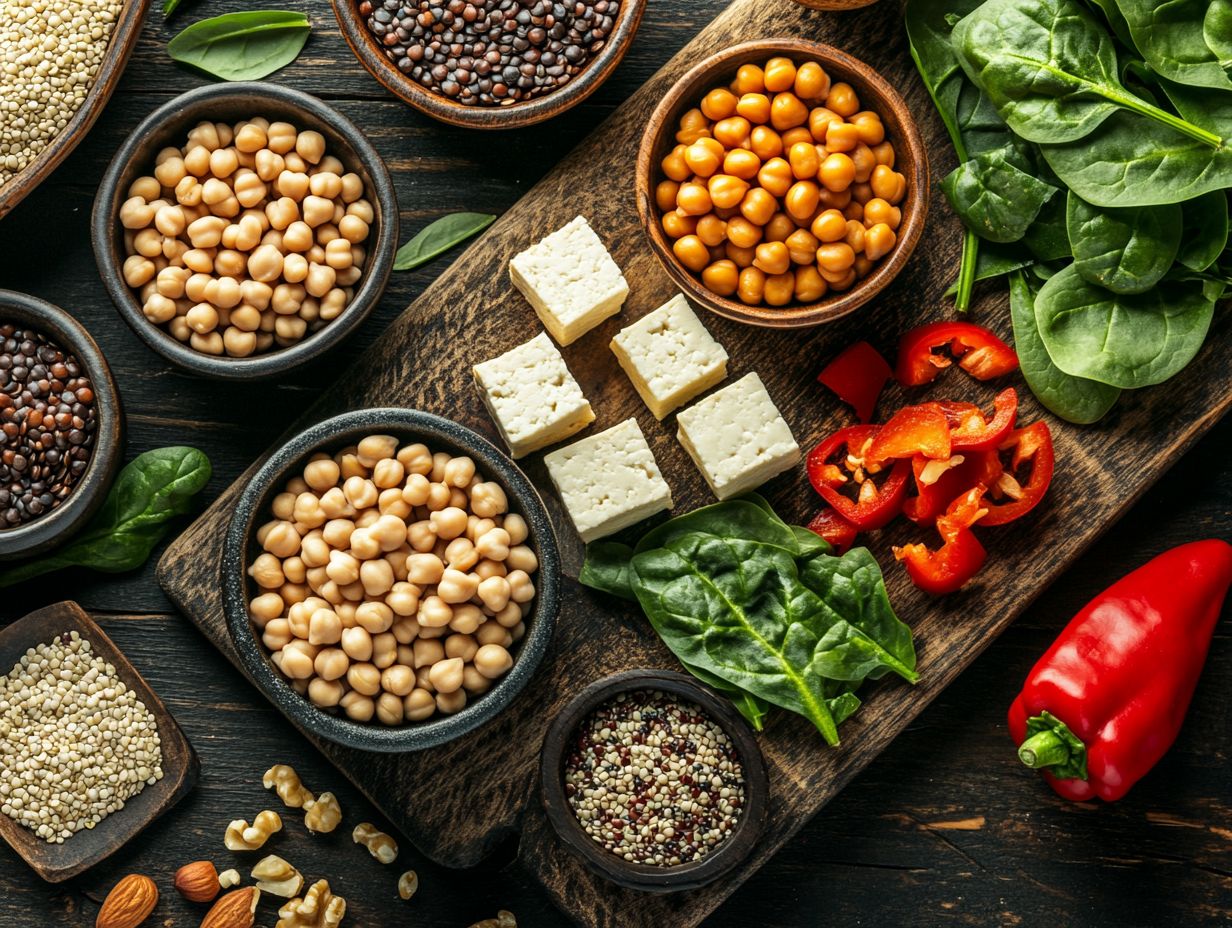
Many people think plant-based proteins are bland and boring, but nothing could be further from the truth. With a variety of flavors and cooking methods, you can turn plant-based meals into delightful experiences.
Explore an array of legumes, grains, and seeds to discover just how versatile these ingredients are. For example, chickpeas can be whipped into creamy hummus or roasted for a crunchy snack, while quinoa serves as a nourishing base for vibrant salads.
Incorporating spices like cumin, turmeric, and smoked paprika adds incredible depth to your dishes, enhancing their flavor phenomenally. Using Edlong flavors takes your cooking adventure to the next level, allowing for a fusion of global cuisines.
By planning meals that reflect these indulgences, you unlock pathways to health, ensuring every bite is as nutritious as it is delicious.
5. Plant-Based Proteins Are More Expensive
The belief that plant-based proteins are pricier than animal-based options can hold you back from fully embracing a plant-based lifestyle and affect your grocery bill.
With planning and insight, eating plant-based doesn t have to be a financial burden. Many staple foods like beans and lentils are budget-friendly and packed with essential nutrients.
Incorporating frozen produce can further reduce costs while preserving nutrient quality. Experts recommend meal planning as a game-changer for budget management, allowing you to shop strategically and minimize waste.
By embracing cost-effective options and expert strategies, you can confidently transition to a plant-based diet without straining your finances.
What Are Plant-Based Proteins and Why Are They Important?
Plant-based proteins are your ticket to a healthier lifestyle. They come from various sources such as legumes, whole grains, nuts, and seeds.
As you choose healthier, ethical, and environmentally conscious dietary options, these proteins play a crucial role in modern nutrition. Their importance in your diet can hardly be overstated, especially as more Americans embrace plant-centric eating.
These tasty proteins provide essential amino acids, which are the building blocks of protein that our bodies cannot produce, along with vitamins, minerals, and fiber. All of these contribute to better digestion and lower cholesterol levels.
Research shows that adding more of these nutrient-dense foods to your meals can significantly reduce the risk of chronic diseases like heart disease and diabetes.
Experts agree this shift is more than a passing trend; it s a meaningful step towards sustainable eating that enhances both personal health and the health of our planet.
If you’re ready to supercharge your nutrition, plant-based proteins are essential!
What Are the Different Types of Plant-Based Proteins?
Plant-based proteins come in various categories, including legumes, grains, and seeds, each with its own unique nutritional profile.
Legumes, like beans and lentils, shine with their high fiber content and essential amino acids, making them superb for muscle repair and digestive health.
Nuts and seeds are packed with healthy fats, vitamins, and minerals, offering not just protein but a wealth of nutrients that support heart health.
Soy products like tofu and tempeh are also very versatile, providing complete protein profiles that fit seamlessly into various dishes. These plant-based proteins not only enhance your meal planning with delightful textures and flavors but also ensure you’re getting optimal nutrition, whether you follow a vegetarian lifestyle or enjoy an omnivorous diet.
How Can One Ensure They Are Getting Enough Protein on a Plant-Based Diet?
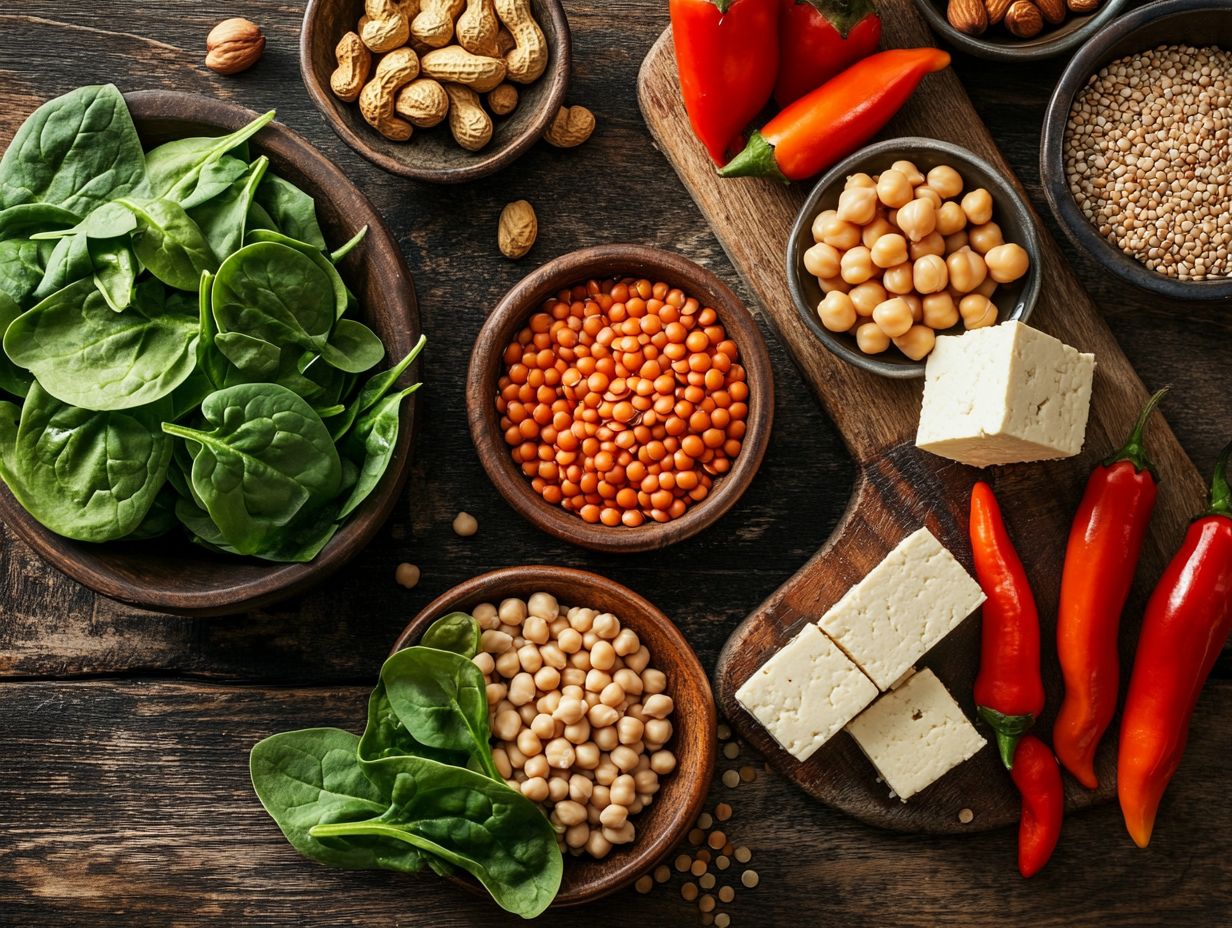
To meet your protein needs on a plant-based diet, it’s essential to plan your meals thoughtfully. Incorporate a variety of protein-rich foods, and this simple approach guarantees you receive all the necessary nutrients to support your overall health.
Explore a diverse array of ingredients, such as legumes, nuts, seeds, and whole grains. These foods deliver protein while packing in essential nutrients like fiber, vitamins, and minerals.
Mixing these sources helps create complete amino acid profiles. For example, pair lentils with quinoa to elevate protein quality.
Your meal planning could feature delightful recipes. Try a chickpea and spinach curry served over fragrant brown rice.
Or enjoy a vibrant quinoa salad with black beans, corn, and creamy avocado. These dishes provide balanced nutrition and tantalizing flavors, keeping your meals exciting and satisfying.
What Are the Health Benefits of Plant-Based Proteins?
Plant-based proteins present an impressive array of health benefits. They enhance digestion due to their fiber content and lower the risk of chronic diseases.
Research shows that diets rich in plant-based proteins can significantly decrease the likelihood of heart disease, diabetes, and certain cancers. They also promote healthier cholesterol levels.
The rich fiber content supports your digestive health and nurtures gut bacteria, ensuring regularity. Opting for plant-based proteins tackles ethical concerns related to animal welfare.
It also contributes to environmental sustainability by cutting down on greenhouse gas emissions and resource consumption. Many individuals discover that a plant-based lifestyle aligns with their health aspirations and personal values.
Are There Any Risks Associated with Consuming Plant-Based Proteins?
While plant-based proteins are typically seen as a healthy choice, it’s important to acknowledge certain risks. These include the lack of certain nutrients and common misconceptions about their ability to meet dietary needs.
For those embracing this lifestyle, awareness of which nutrients might be lacking is crucial. Vitamins and minerals like B12, iron, and omega-3 fatty acids, a type of healthy fat important for heart health, can often be less abundant in plant sources.
Many people assume a varied selection of plant foods will fulfill all dietary requirements. However, thoughtful planning is essential to prevent deficiencies.
Nutrition experts stress the importance of incorporating fortified foods or specific dietary supplements to bridge these nutritional gaps. By recognizing these challenges, you can maintain a balanced and healthy approach.
How Can Plant-Based Proteins Be Incorporated into Meals?
Incorporating plant-based proteins into your meals can transform your culinary experience. This enhances both flavor and nutritional value while inviting you to explore diverse recipes.
Embrace a variety of legumes, such as lentils and chickpeas. Whole grains like quinoa and brown rice, along with nutrient-packed nuts and seeds, help craft wholesome meals.
To preserve vibrant flavors and essential nutrients, employ cooking methods like steaming, roasting, or saut ing. For example, imagine a quinoa-stuffed bell pepper as a delightful centerpiece on your table.
Complement it with a refreshing chickpea salad bursting with colorful vegetables. Embracing creativity in meal planning makes eating exciting and encourages experimentation with spices and herbs.
Frequently Asked Questions
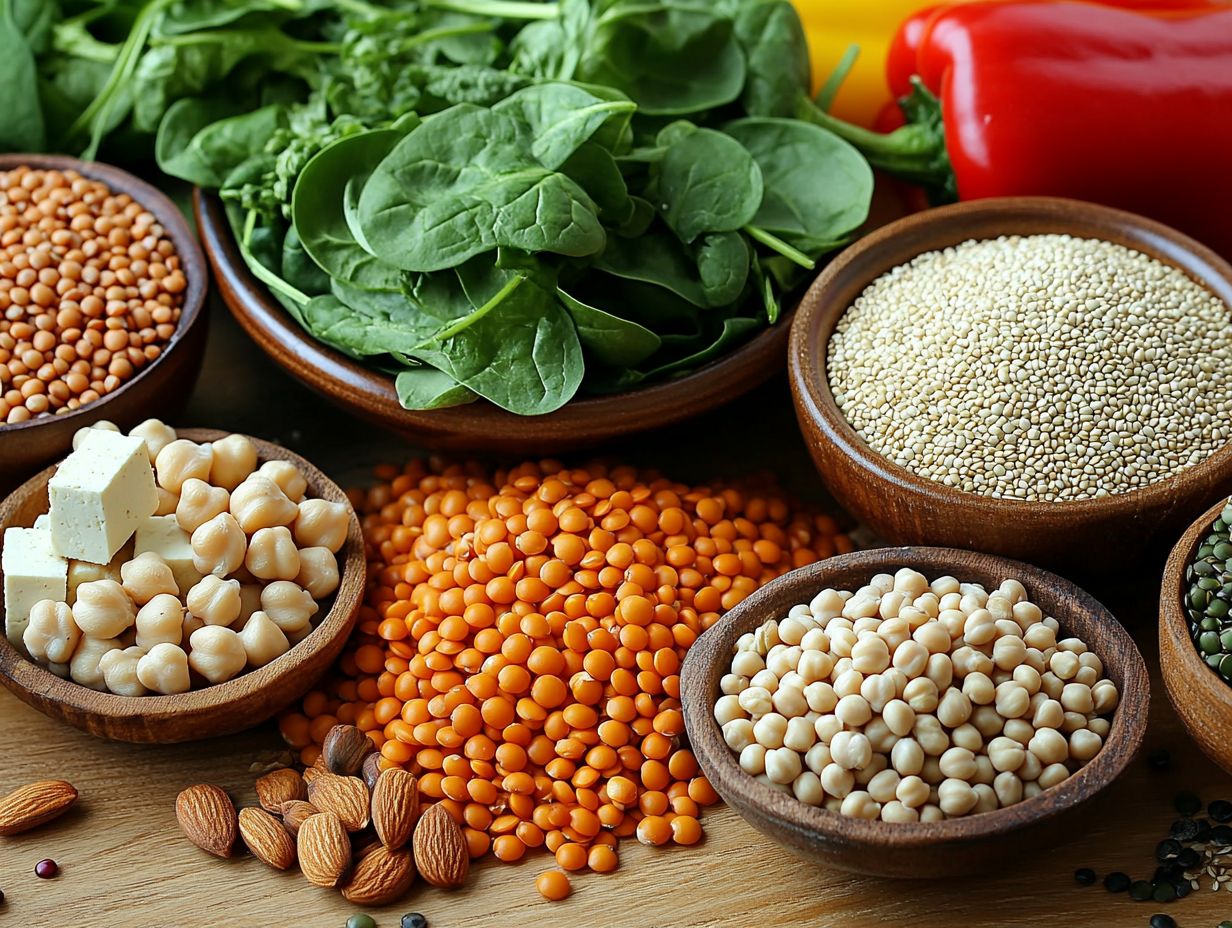
What are some common misconceptions about plant-based proteins?
Many people think plant-based proteins aren’t complete, don t provide enough protein, or lack nutrition compared to animal proteins. Others believe they are hard to digest or don t offer enough variety.
Are plant-based proteins complete proteins?
Yes! Many plant-based proteins contain all essential amino acids those our bodies can’t produce on their own. Quinoa, buckwheat, and soy are great examples.
Do plant-based proteins provide enough protein?
Absolutely! Many plant-based options provide protein levels similar to animal foods. For instance, one cup of cooked lentils offers about 18 grams of protein, close to what you’d find in a 3-ounce chicken serving.
Are plant-based proteins as nutritious as animal proteins?
Yes! Plant-based proteins can be just as nutritious. They often come packed with fiber, antioxidants, and healthy fats nutrients often missing in animal proteins.
Are plant-based proteins difficult to digest?
Some, like beans and legumes, might be tough for some people to digest. However, soaking and cooking them well can help, along with enjoying other plant-based sources like nuts, seeds, and grains.
Do plant-based proteins lack variety?
No way! There s a fantastic range of plant-based proteins like beans, legumes, nuts, seeds, grains, and soy products. These can be prepared in countless ways, making it easy to add exciting options to your meals!
